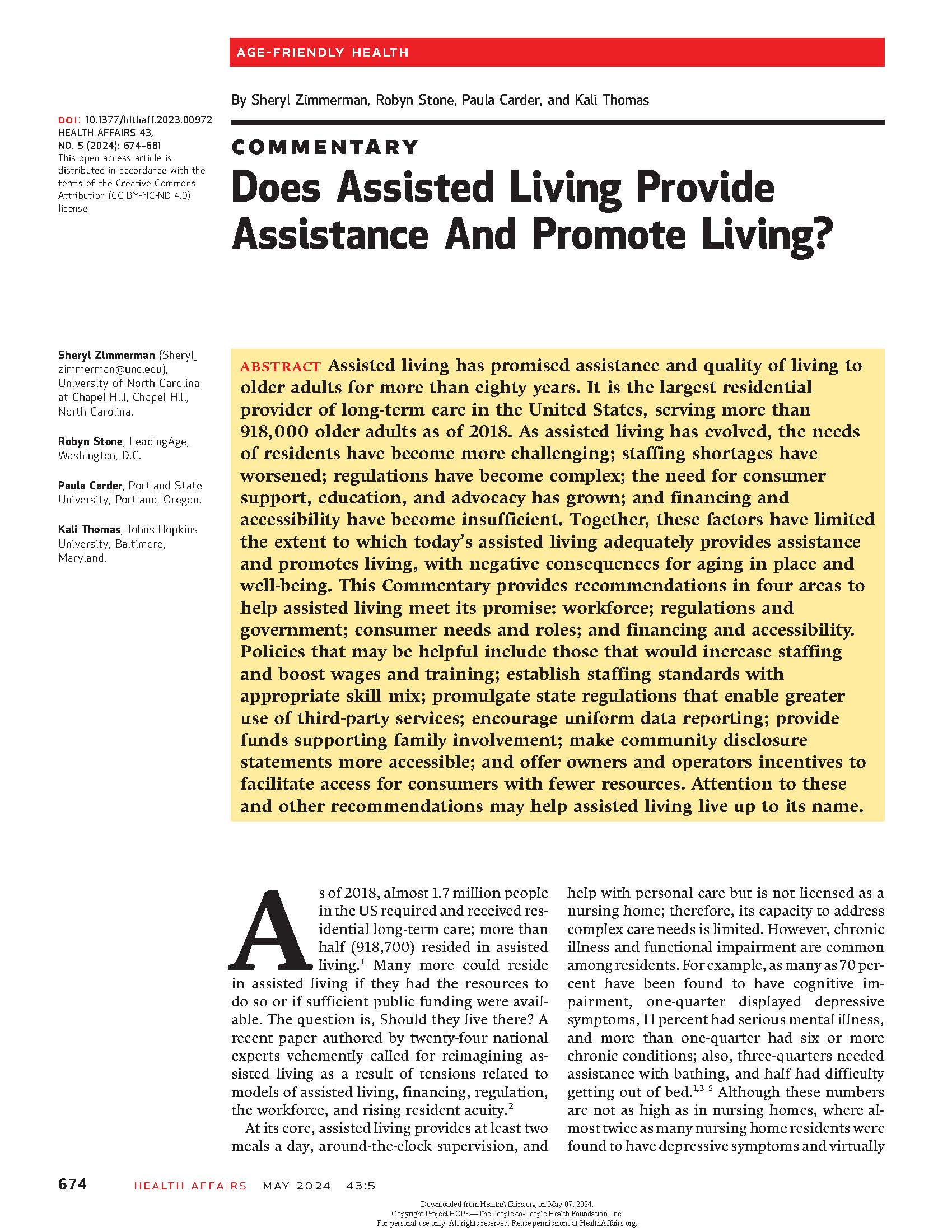Background
Despite the rapid growth of assisted living (AL) and frequent hospitalizations among AL residents, little is known about their patterns of post-acute care transitions and outcomes. This study examined the post-acute care transitions among AL residents and their association with outcomes in the first 30 and 60 days after hospital discharge.
Methods
This study used data from 2018 national Medicare enrollment and claims datasets, the Minimum Data Set (MDS), and Medicare Provider Analysis and Review (MedPAR) of 104,497 unique Medicare beneficiaries residing in ALs in the U.S. Post-acute care referrals, based on hospital discharge status, to skilled nursing facilities (SNF), home with home health care (HHC), home without HHC, and other settings. Outcomes included 30-day and 60-day hospital readmissions, emergency department (ED) visits, long-stay care nursing home placement, and mortality. Multinomial logistic regression analysis and logistic regression analysis were conducted.
Results
The most common post-acute care referral was to SNF (40%), followed by home without HHC (28%), home with HHC (17%), and others (15%). Compared to discharge home without HHC, discharge to SNF was associated with a lower likelihood of ED visits (Odds Ratio = 0.597, p < 0.01) and hospital readmissions (OR = 0.856, p < 0.001), and higher likelihood of long-stay nursing home placement (OR = 11.224, p < 0.01) and mortality (OR = 2.025, p < 0.01). Discharge home with HHC was associated with a higher likelihood of hospital readmissions (OR = 1.148, p < 0.01) and a lower likelihood of long-stay nursing home placement (OR = 0.737, p < 0.05) than discharge home without HHC. The results were similar within the first 30 days as well as 60 days after hospital discharge.
Conclusions
AL residents who are discharged to different post-acute care settings tend to differ in 30-day and 60-day outcomes. At hospital discharge, clinicians and discharge planners should be provided information about the exact type and availability of services at AL to make the most appropriate discharge referrals for AL residents.


